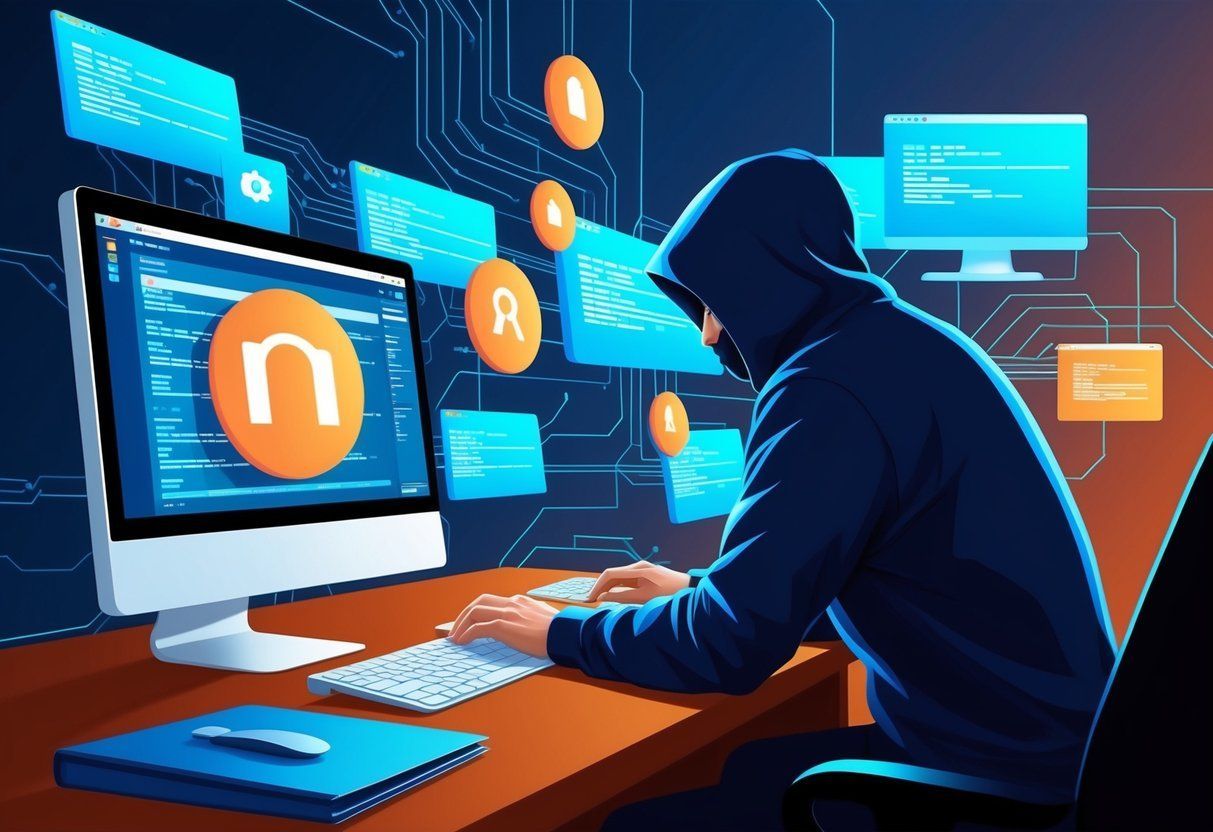OpenAI ChatGPT AI Ethics Specs: Embracing Humanism in Artificial Intelligence Development
The World of AI Ethics and Decision-Making

Artificial intelligence has rapidly evolved from theoretical concepts to practical applications that impact our daily lives.
Large language models (LLMs) like ChatGPT and other generative AI systems represent some of the most visible advancements in this field.
These systems demonstrate impressive capabilities but also raise profound questions about their limitations and ethical boundaries.
Ethical Frameworks in Modern AI Systems
Major AI companies have developed various approaches to guiding their systems’ responses to ethical questions.
OpenAI has published detailed documentation outlining how ChatGPT should approach moral reasoning, while competitors like xAI’s Grok have faced challenges with controversial outputs requiring engineering intervention.
These frameworks attempt to establish boundaries for AI behavior, but often fall short of addressing the true complexity of ethical reasoning.
The current approach to AI ethics often suffers from fundamental misunderstandings:
- Oversimplification of complex questions
- Overconfidence in AI’s ability to provide “correct” answers
- Underestimation of the human elements in ethical reasoning
- Failure to acknowledge the context and intent behind questions
The Limitations of AI in Ethical Reasoning
LLMs excel at pattern recognition and text generation but lack true understanding and judgment. This becomes particularly problematic when they engage with ethical dilemmas.
Consider the typical AI approach to ethical questions:
| Problem | AI Approach | Human Reality |
|---|---|---|
| Question phrasing | Treats questions at face value | Considers underlying motives and context |
| Answer format | Seeks definitive “correct” responses | Recognizes legitimacy of multiple viewpoints |
| Nuance | Attempts to simulate balanced consideration | Draws from personal values and experiences |
| Purpose | Aims to satisfy user query | Understands ethical inquiry as self-revealing |
AI systems cannot replicate the deeply human nature of ethical reasoning. When a person engages with a moral question, they do more than process information—they reveal aspects of themselves through which questions they ask, how they approach them, and what conclusions they reach.
The Thought Experiment Problem
Many AI systems stumble when presented with classic ethical thought experiments.
Take the “trolley problem,” a scenario where one must decide whether to divert a runaway trolley to kill one person instead of several others. This dilemma has been debated by philosophers for decades without consensus because:
- It invokes different ethical frameworks (utilitarian, deontological, virtue ethics)
- It tests how we conceptualize concepts like action vs. inaction
- It reveals personal priorities and values
When AI systems like ChatGPT attempt to engage with such problems, they often:
- Fail to recognize the purpose behind such questions
- Provide oversimplified responses
- Miss opportunities to reject inappropriate framing
- Treat hypothetical situations as requiring definitive answers
Some thought experiments deliberately introduce elements of cruelty or dehumanization as a test.
Human ethicists might recognize and reject such framing, while AI systems tend to engage with them literally, potentially legitimizing harmful premises.
The Bias Question and Impossible Neutrality
AI companies frequently claim to pursue “unbiased” or “neutral” responses to ethical questions. This goal fundamentally misunderstands ethics:
All ethical frameworks contain values and priorities. Whether utilitarian, virtue-based, religious, or otherwise, every approach to ethics incorporates specific views on what matters and why.
There is no neutral observer position. Even deciding which factors are relevant to a moral question reveals underlying assumptions and values.
Therefore, when AI companies like OpenAI try to program their systems to provide “objective” ethical guidance, they’re attempting an impossible task. The very selection of which ethical considerations to include in their model specifications represents a value judgment.
Why Ethical Questions Resist Automation
Meaningful ethical inquiry serves purposes beyond reaching conclusions:
- Self-discovery : The process reveals one’s values and character
- Building reasoning skills : Working through dilemmas develops moral reasoning abilities
- Community dialogue : Ethical discussions build shared understanding
- Growth and change : Perspectives evolve through consideration and reflection
None of these purposes is served by outsourcing ethical thinking to machines. AI systems like ChatGPT cannot experience the personal growth that makes ethical reasoning valuable; they can only simulate responses based on patterns in their training data.
The Language Problem in AI Ethics
The way questions are phrased significantly influences responses—a phenomenon known as an “intuition pump.” AI systems are particularly vulnerable to this effect:
- Changing a single word can shift the entire tone of a response
- Rephrasing the same essential question may yield contradictory answers
- Subtle framing cues can lead to dramatically different conclusions
For example, asking if something is “acceptable” versus “morally correct” might produce entirely different AI responses, revealing the brittleness of these systems’ ethical reasoning.
The Challenge for AI Companies
Leaders like Sam Altman face significant challenges in addressing these limitations.
The pressure to present AI as capable and trustworthy conflicts with the reality that these systems fundamentally cannot engage in authentic ethical reasoning.
Major obstacles include:
- Technical limits : Neural networks and machine learning algorithms cannot replicate human moral reasoning
- Governance questions : Who decides which ethical frameworks should guide AI responses?
- Transparency issues : The inner workings of these systems remain opaque to most users
- Responsibility concerns : The potential impact of positioning AI as an ethical authority
Moving Forward
As generative AI and large language models continue to develop, a more honest approach would acknowledge their limitations in ethical domains.
Rather than positioning these tools as capable of providing moral guidance, they might better serve as:
- Facilitators of human ethical discussions
- Tools for exploring different ethical perspectives
- Assistants that explicitly acknowledge their limitations
The most responsible approach requires recognizing that artificial general intelligence remains theoretical, and current AI systems lack the fundamental human experiences that inform ethical reasoning.
Frequently Asked Questions

How does ChatGPT ensure ethical interactions with users?
ChatGPT employs several methods to maintain ethical interactions.
OpenAI has built safeguards into the system to prevent harmful outputs. These include:
- Content filtering systems that screen potentially harmful requests
- Regular model updates based on user feedback
- Human review processes for improving responses to ethically complex questions
- Clear usage policies that define boundaries of acceptable use
The AI also uses reinforcement learning from human feedback (RLHF) to better align with human values and expectations. This helps ChatGPT respond appropriately to sensitive topics while maintaining helpfulness.
What measures are in place to prevent the misuse of ChatGPT?
OpenAI has implemented multiple safeguards to prevent misuse:
- Technical limitations : Deliberately designed restrictions on generating harmful content
- Monitoring systems : Continuous tracking of usage patterns to identify potential misuse
- Usage policies : Clear guidelines prohibiting harmful applications
- Access controls : Varying levels of access depending on user needs and potential risks
Additionally, OpenAI develops and deploys AI detection tools to help identify AI-generated content in contexts where disclosure is important, such as academic settings.
Can artificial intelligence like ChatGPT adhere to human ethical standards?
AI systems like ChatGPT can reflect programmed ethical guidelines but face challenges in fully adhering to human ethical standards:
| Capabilities | Limitations |
|---|---|
| Following programmed rules and constraints | Lacks true moral understanding |
| Learning from human feedback | Cannot experience moral emotions |
| Adapting responses based on context | Limited in handling novel ethical dilemmas |
| Evolving with improved training | May reflect biases in training data |
Research suggests that while AI can simulate ethical reasoning, it fundamentally processes ethical questions differently than humans. The system aims to align with human values but requires ongoing human oversight.
What is the impact of AI like ChatGPT on human labor and employment?
ChatGPT and similar AI technologies are affecting employment in several ways:
- Automation of routine tasks : Administrative writing, basic customer service, and content generation
- Augmentation of professional capabilities : Helping knowledge workers become more efficient
- Creation of new job categories : AI trainers, evaluators, and ethics specialists
- Shifts in required skills : Greater emphasis on creative thinking, ethical judgment, and AI collaboration
While some job displacement occurs, history suggests technological advances typically transform rather than eliminate human work. The key challenge is managing this transition to minimize disruption and maximize benefits across society.
How does OpenAI address potential biases in ChatGPT?
OpenAI tackles bias in ChatGPT through multiple approaches:
- Diverse training data : Expanding data sources to include varied perspectives
- Bias detection : Developing tools to identify and measure biases in responses
- Iterative improvement : Regular model updates based on user feedback
- Transparency : Acknowledging known limitations and biases
The company also employs red-teaming exercises where experts deliberately probe for biases and problematic responses. Despite these efforts, eliminating all biases remains an ongoing challenge requiring continuous improvement.
In what ways does humanism influence the development of AI tools like ChatGPT?
Humanistic principles shape ChatGPT’s development in several important ways:
- User-centered design : Prioritizing human needs and experiences
- Ethical frameworks : Incorporating humanistic values like dignity and autonomy
- Accessibility considerations : Making AI benefits available to diverse populations
- Transparency goals : Providing clarity about AI capabilities and limitations
Humanistic approaches also emphasize the complementary relationship between AI and humans rather than replacement. This perspective views AI as a tool to enhance human potential while preserving human agency and decision-making in critical areas.
Building better solutions for better business®




